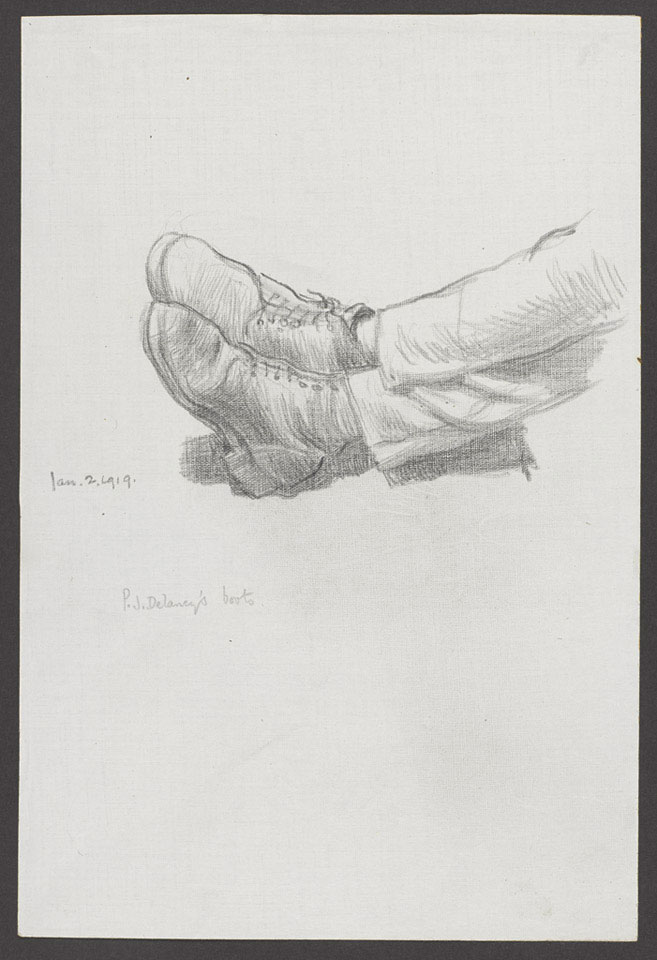
Online Collection
'P.J.Delaney's boots', 'Jan. 2.1919', France, 1919
Pencil drawing by Sergeant Ernest Blaikley (1885-1965), 28th Battalion, London Regiment (Artists' Rifles), 1919.
Sketch of the boots of Patrick J Delaney, Royal Dublin Fusiliers, an instructor at the First Army School of Scouting, Observation and Sniping at Senlis.
The 28th County of London Battalion (Artist's Rifles) of the London Regiment was formed in 1908 as part of the Territorial Force. Its predecessor unit, the 38th Middlesex Rifle Volunteer Corps, formed in the 1860 had included artists, actors and musicians, which led to the adoption of the title 'Artists' Rifles'.
With the outbreak of World War One (1914-1918) and mobilisation, the unit expanded greatly with the formation of three sub-battalions. The 1/28th County of London Battalion (Artist's Rifles) deployed to France in October 1914 and became an Officer Training Corps. It was followed by the 2/28th in November 1915 which was absorbed into 1/28th. 3/28th remained in England, renumbered as 2/28th, also acting as an officer training unit. The Artists' Rifles produced thousands of officers who went on to serve across the Army.
Ernest Blaikley, an accomplished artist who worked for 'Punch' and 'The Scout' magazines, served with 2/28th Battalion, London Regiment (Artists' Rifles) during World War One. He worked with Major H Hesketh-Prichard at the First Army School of Scouting, Observation and Sniping, established at Linghem in the Pas de Calais in August 1916. Blaikley made sketches at Linghem and, later in 1918 and early 1919, at the school at Senlis.
Hesketh-Prichard championed the use of snipers to save lives, improve morale in allied units and to demoralise the enemy by inflicting casualties, instilling fear, and restricting enemy actions such as artillery spotting. The damage well-organised and trained sniper teams could cause was disproportionate to their numbers. In addition, intelligence gained from teams that were constantly observing the enemy was a relatively untapped resource.
Blaikley illustrated Hesketh-Prichard's book 'Sniping in France' which was published in 1920. Before the War Blaikley had attended the Central School of Arts and Crafts in London and he was a founding member of the Society of Graphic Artists in 1920. Blaikley went on to become the Imperial War Museum's first Keeper of Art.
NAM Accession Number
NAM. 2006-05-55-1
Copyright/Ownership
National Army Museum Copyright
Location
National Army Museum, Study collection
Object URL
https://collection.nam.ac.uk/detail.php?acc=2006-05-55-1

